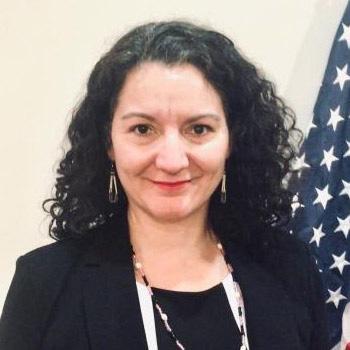ELDER ALMA BROOKS N AT I V E W O M E N ' S A S S O C I AT I O N O F CANADA, ELDER
AMANDA TASCÓN PANCHI
T E C H N I C A L C O O R D I N ATO R O F T H E D E PA R T M E N T O F W O M E N AND GENDER, INDIGENOUS ORG A N I Z AT I O N O F A N T I O Q U I A
OLGA MONTÚFAR CONTRERAS
P R E S I D E N T, I N D I G E N O U S PERSONS WITH DISABILITIES GLOBAL NETWORK
PATRISIA GONZALES
P RO M OTO R A O F I N D I G E N O U S M E D I C I N E & H E R B A L I S T D E PA R TMENT OF MEXICAN AMERICAN STUDIES, UNIVERSITY OF ARIZONA
TRADITIONAL HEALING PRACTICES KEY TO RECOVERY FROM LONG-TERM EFFECTS OF COLONIZATION THE SCARS OF COLONIZATION RUN DEEP IN THE INDIGENOUS WOMEN OF THE AMERICAS. Feelings of inferiority, hopelessness, self-sabotage, and selfdestructive behaviours are natural responses to the genocide and campaigns of assimilation that have been waged against them, and the deplorable conditions in which many are forced to live, says Alma Brooks, a Maliseet grandmother from the St. Mary’s First Nation in New Brunswick who is the East Elder of the Native Women’s Association of Canada (NWAC). The result, Ms. Brooks told the International Summit of the Americas on Violence Against Indigenous Women, is frustration, anger, high rates of suicide, cancer, addiction, and imprisonment, along with hostile attitudes and resentment towards white people. But, she and others told the Summit, there is a reawakening interest in traditional healing to help Indigenous women find the balance, harmony, and peace that has been missing from their lives. “Traditional healing methods utilize ancient ceremony, story, songs, dance, teaching, sound frequencies, and other culturally significant tools that carry the elements of our genetic memory,” said Ms. Brooks, who works with NWAC’s Resiliency Lodge to provide counselling and support to Indigenous women. “A healing of the people and a healing of the land are synonymous,” she said. “All life is connected. And life is resilient.” Olga Montúfar Contreras, who is President of both the Indigenous Persons with Disabilities Global Network and the Fundación Paso a Paso, told the Summit that many Indigenous women prefer to access health care based on traditional medicine, which has been handed down from generation to generation.
“ALL L IFE IS CONN EC TED A N D TH AT A N C ES TR AL ME MORY IS TRA NS M I T TED EP I GEN ETI C A LLY FRO M ONE GEN ERATI ON TO TH E N EXT . ” - SAID ALMA BROOKS
9
And Amanda Tascone Panchi, the Technical Co-ordinator of the Department of Gender and Women at the Indigenous Organization of Antioquia in Colombia, said her group employs an Indigenous psychologist and traditional healer to help Indigenous women maintain their soul and spirit. “Traditional methodology has helped us move forward,” said Ms. Panchi. “We have worked closely with plants, and elders have led this transformation.” Patrisia Gonzales, Promotora of Indigenous Medicine and Herbalist in the Department of Mexican American Studies at the University of Arizona, is the granddaughter of Kickapoo, Comanche, and Macehual peoples, and specializes in Indigenous ways of knowing and Indigenous medicine. “For the last 25 years,” Dr. Gonzales told the Summit, “I've done traditional clinics, I've done traditional treatments at powwows with survivors of torture and violence, peace bearers and peace gatherings.” And she has held traditional clinics in collaboration with centres for domestic violence. Dr. Gonzales said she helped to launch a promotora project in Albuquerque in which Nahua elders gave their permission for her group to build a ceremonial sweat lodge, based on the Nahua tradition, that incorporated traditional medicine. That led to other sweat lodges in which healing comes through plants as well as treatment that looks like massage but is actually a form of ceremony connecting the recipient to their light and the sun. That evolved into a clinic where there is a healing room in which elders and health promoters offer traditional treatment. And that eventually grew into an annual medicine gathering. “We had to re-teach ourselves and reconnect each other to what our grandparents had taught us,” said Dr. Gonzales. “We came together to share what we knew because the power of our hands is why we were persecuted as Indigenous Peoples. Not only for our plant knowledge and our connection to our ceremonies, but the very power that connected us to our ability to heal ourselves and others was through our own bodies. And so, we really have reclaimed that power.” As a professor, she said, she was able to get a grant to research Indigenous critical thinking circles that are intended for the prevention of gender violence. (Continued on page 10)
KCI-NIWESQ • NWAC








